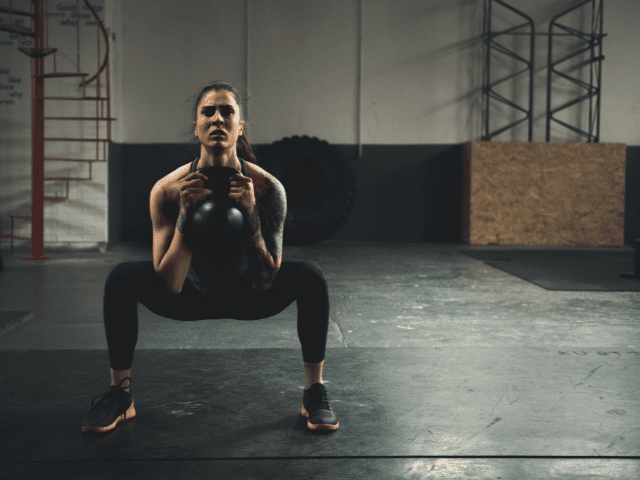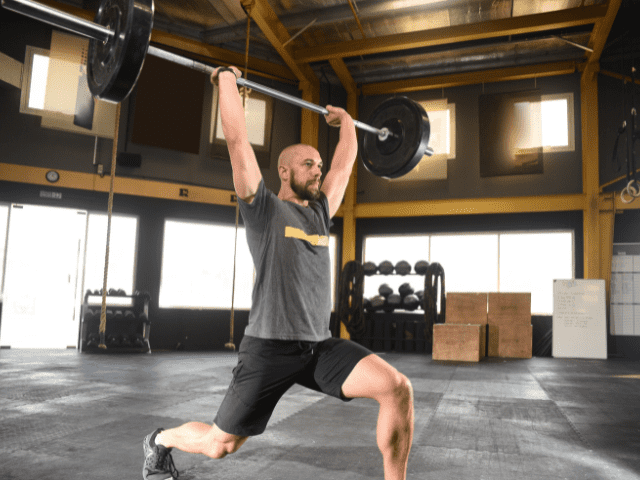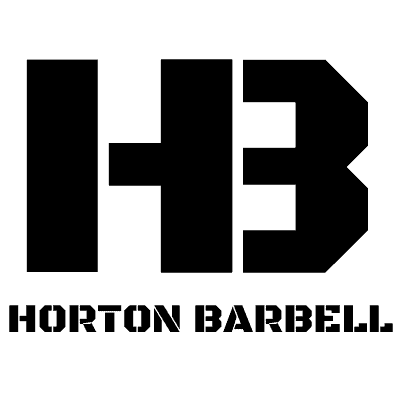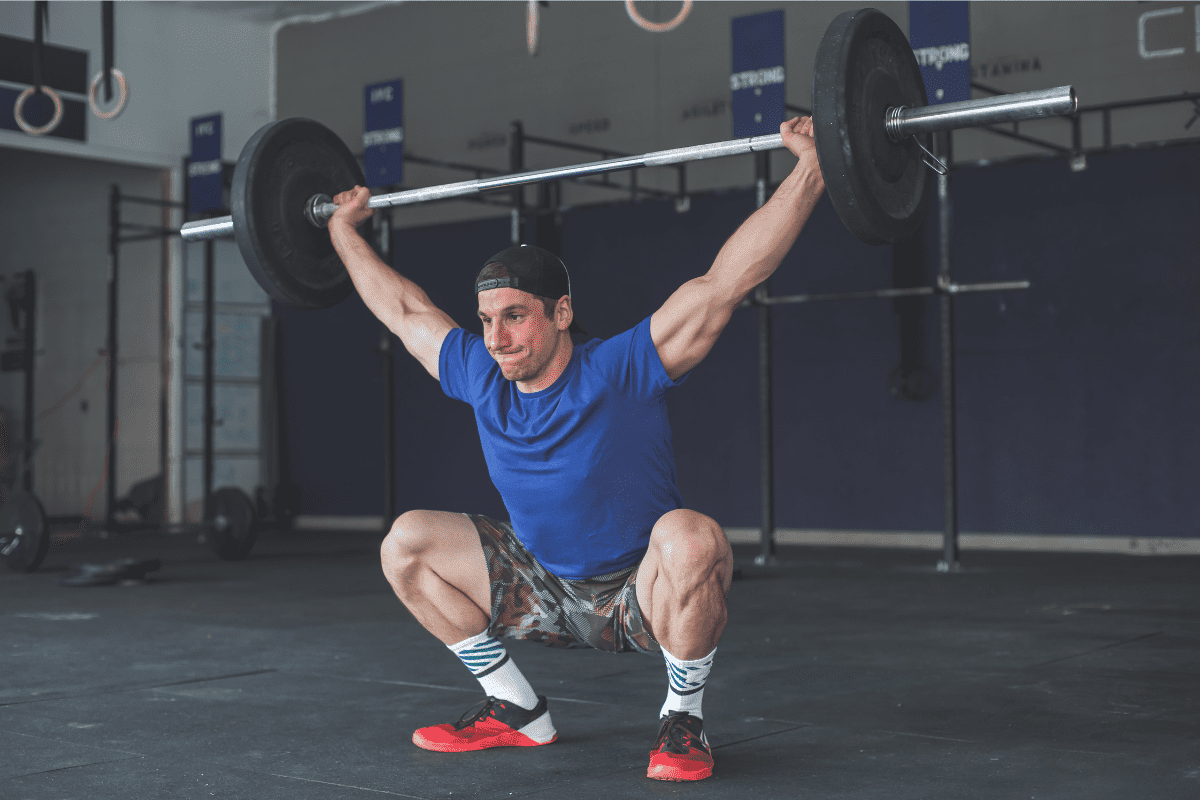Overhead Squat (How To, Benefits & Alternatives)
Overhead Squats are easily one of my all-time favorite exercises. They are the perfect mobility assessment movement and can be implemented to help address many flexibility and mobility issues.
Not only will they help improve mobility in multiple areas of the body, but they can also help improve shoulder stability as well. There is just so much value to be had from doing Overhead Squats that I think it’s an exercise that should be in almost any training program.
In this guide, I’ll teach you how to Overhead Squat including key coaching points and offer a few alternatives for the exercise as well.
How To Do Overhead Squats
Equipment Needed
- Barbell
- Bumper Plates (can technically be done with cast iron plates, but bumper plates are highly recommended)
Muscles Worked
- Quads
- Hamstrings
- Glutes
- Erectors (Low Back)
- Shoulders
- Core
Step-by-Step Instructions
- Grab a barbell with a snatch-width grip and raise it to full extension overhead.
- Set the feet shoulder-width apart with (optionally) toes pointed slightly out.
- Elevate the bar towards the ceiling and then create tension by ‘pulling the bar apart’.
- Set the eyes straight ahead, inhale and brace the core.
- Initiate the movement by pushing the hips back and then descending into a full squat position.
- Keep the feet flat on the ground, weight distributed through the heels and mid-foot.
- Keep knees pushed out and overtop the shoelaces.
- When you reach the bottom of the squat, push the feet through the floor and drive the hips up.
- Once you’ve completed all reps, drop the bar forward to the floor.
Coaching Points
If you find yourself struggling to keep the bar in the overhead position (it keeps falling forward), then you probably have a mobility issue in either the shoulders or thoracic (mid to upper back). Switch to a PVC Pipe (listed as an alternative down below) until your mobility improves.
Overhead Squat Benefits
There are an incredible amount of benefits to Overhead Squats.
First, as an assessment tool. I often include Overhead Squats into a barbell warm-up at the beginning of a lift, like a Javorek Complex or Snatch Complex.
Overhead Squats allow me to quickly see if there are any mobility issues of concern going into a lift. If anything is tight, sore or painful on the athlete it will often be exposed during Overhead Squats.
Second, as a movement to improve mobility. Overhead Squats demand mobility from the ankles, hips, back and shoulders. Any big mobility issues in any of these areas can make the lift almost impossible. However, continuous work on Overhead Squats can help keep these areas mobile and functional.
Finally, as a tool to improve shoulder stability. Want to see a lifter with strong shoulder stability? Watch an athlete who can overhead squat 220 pounds. If they have the range of motion and stability to do that, then they possess shoulder stability that should help their shoulders stay healthy.
Overhead Squat Variations
Overhead Squat with PVC Pipe
This variation is perfect for both beginners first learning the movement and for anyone who doesn’t have the mobility yet to use a barbell.
Nothing about the movement itself changes, it’s simply done with a PVC Pipe instead of a bar. If you don’t have PVC Pipe, a broomstick works great as well.
DB Overhead Squat
Dumbbell Overhead Squats has two main benefits. Obviously, if you don’t have a barbell, the dumbbell version can be used as a substitute.
The dumbbell variation is best utilized, in my opinion, with a single dumbbell – one arm at a time. Doing Overhead Squats with two dumbbells overhead is incredibly hard – harder than the barbell version.
However, using a single dumbbell is much more forgiving and can be a good progression from a PVC Pipe working towards using a bar.
Overhead Squat Alternatives
Need a substitute for Overhead Squats? Here are a couple of exercises you may be able to use in its place:
(Need more options? Here are some of my favorite Overhead Squat alternatives.)
Goblet Squat

If you’re simply not ready to do Overhead Squats, but you’re looking for a good alternative to warm-up the lower body – give Goblet Squats a try.
They’re convenient because they require very little setup (grab a kettlebell or dumbbell and you’re ready to go) and they are light enough to fit into a warm-up.
Reverse Overhead Lunge

If you really want to do Overhead Squats, but you’re really struggling with the mobility demands of the movement, you may be able to give Reverse Overhead Lunges a try.
The lunge position is a little less demanding on lumbar flexibility for maintaining the bar in the overhead position and I’ve had many athletes use Reverse Overhead Lunges as the start of a progression towards Overhead Squats.

Online Strength Programs
- 1-on-1 Online Coaching
- Sports Performance Programs for Football, Basketball, Soccer & More
- Programs for Former Athletes (Legends) Who Still Want to Train Like Athletes
- Programs for Adults Who Want to Get Healthy (and look great at the beach!)
- Use Code “HB10” to Get 10% Off Today
More Links and Info
Looking for more lower body strengthening exercises? You should definitely check out the Lower Body Lifts section of the Horton Barbell Exercise Library. It has dozens of lifts to choose from, all with full instructions.

